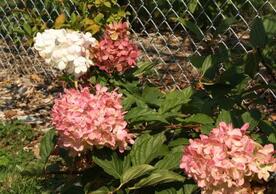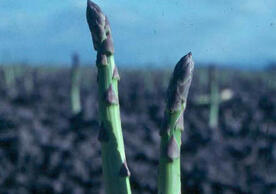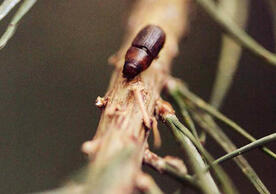Hydrangea paniculata ‘Renhy’
The best time of year is a highly debatable concept. Do you like the beach, the cooler weather, the floriferous spring, the Holidays, cookouts, water- or snow-skiing? Or are you one of us who relish the changes, who love the beach but also the good outdoor working weather of spring and fall? My northern European heritage kicks in at this time of year, and I enjoy the need to ‘put up the wood,’ to batten down the hatches, tighten up the house and prepare for some off-season garden reading.
First on my horticultural list is The Brother Gardeners, by Andrea Wulf, a gift from a recent birthday. Then I intend to re-read Plants, Man and Life, by Edgar Anderson. Please send me back some interesting titles for a horticultural reading list that we will post on our web site. Has everybody seen our new web site? Probably not, because we just launched the thing. It’s really fantastic. You can find the columns there, and we will eventually have an archive where I will post all of them. Go to http://marshbotanicalgarden.yale.edu/, and browse around. You’ll find pictures of the garden and staff, events listed in the calendar, some of our history and links to our close friends and professional contacts.
Plant breeders are very interesting people, with the patience of modern day Job’s, and the love of plants, usually a genus or species. One group working on a red-flowering Hydrangea that would bloom early in the season (mid-summer is early in the Hydrangea season) started their project in 1987. In 2002, they introduced H. paniculata ‘Renhy.’ This plant provides charm actually beyond the original scope because it not only blooms early, but continues right through till frost, AND the blooms (although not opening red) do attain that color, after opening white, staying that way for about two weeks, then changing to pink and finally to red. The effective esthetic life of each cluster of sterile flowers is over a month!
The fact that it keeps sending up flowering shoots week after week means that you can have white, pink and deep red flowers on the plant at the same time. This is an amazing show, and I can’t wait for ours to attain a size that will provide more than one panicle of each color.
This variety grows about 6 to 7 feet tall with a spread of 4-5 feet. It grows more upright during the early summer, as it stretches for sunlight, but as the heavy 6-8 inch wide flower panicles begin to mature, the supporting branches will bend with their weight, creating a cascade effect that is really remarkable in the more mature specimens. Our young plant here at the garden is a bit awkward in the same way a teenager is, but with the promise of true beauty ahead.
Plant in full sun, average but well-drained garden soil and let this fast-growing shrub fill in that special spot in the shrub border, or perhaps as an accent near the patio. Light afternoon shade would not be a bad thing, as the plant (along with the rest of the species and many of the genus) doesn’t respond well to heat and drought. Although it should not be sitting in water (hence my admonition about well-drained soil), it should have water available to it when it needs it.
Because this plant was the result of years of development, it has been patented, so there are restrictions on its asexual propagation. You can’t really even divide it in your own garden, by law. Obviously so much work went into coming up with this great plant, you can’t really fault the idea of patenting the variety. But the whole idea of patenting life does give me pause. Any thoughts?
So until next week, enjoy this spectacular fall weather, get your bulb order in, have the chimney swept and harvest some kale for me.
Your friend,
Eric




